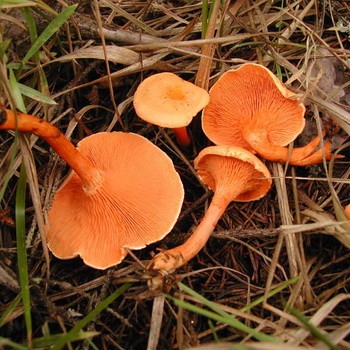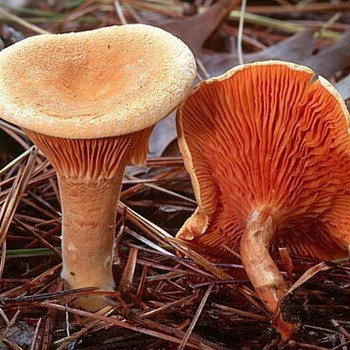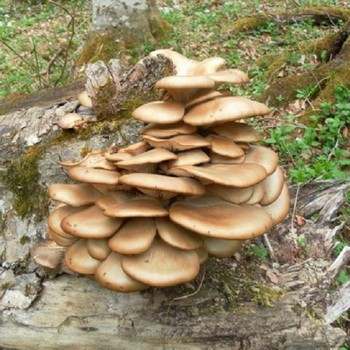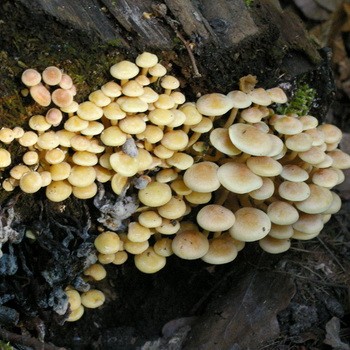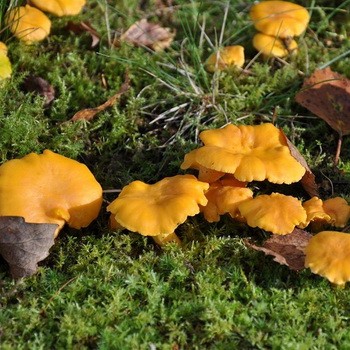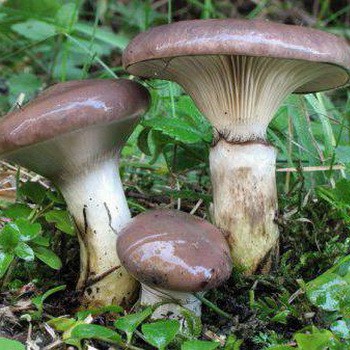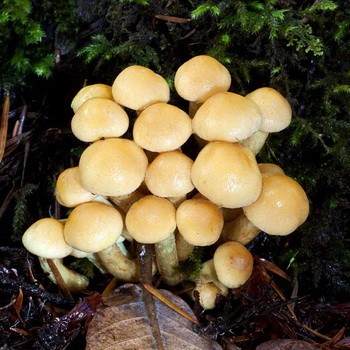How to distinguish edible chanterelles from false ones: expert advice
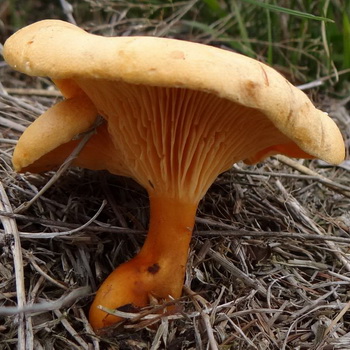
In this article, we will talk about how to distinguish foxes from poisonous mushrooms, what signs exist for this.
Content
How can one distinguish a chanterelle from a false chanterelle?
Although false chanterelles do not have useful substances and good taste, they can not be called poisonous. In their composition, false mushrooms do not have harmful toxins, so they are classified as conditionally edible species. After soaking and heat treatment, these double mushrooms can be pickled, salted, fried, stewed.
As mentioned above, a false chanterelle is not life threatening, but people with hypersensitivity to eating these mushrooms can have an upset digestive system.
One of the false "brethren" of edible chanterelles is talker mushroom. How can one distinguish a chanterelle from a false chanterelle, and what happens if such mushrooms are in the basket? Talkers are not poisonous mushrooms, and there will be no poisoning from them. But the taste that is inherent in real red beauties, you will not feel. So, govorushki after 3-day soaking (with frequent changes of water) are boiled for 30-35 minutes and then proceed to preservation or cooking.
How to distinguish edible chanterelle from false, will help a detailed familiarization with each of these species. For example, real species during long rains never rot, and during a drought they never dry out, they just stop growing. Mushroom pickers with experience know how to distinguish chanterelles, and therefore love them for their excellent taste, as well as their ability to preserve freshness and juiciness in all weather conditions. In addition, edible chanterelles are never wormy, and they do not break during transport. Even in the most productive years, they are collected in bags, while the fruiting bodies do not lose their attractiveness and do not break.
Let's consider in detail how to distinguish false foxes from real ones thanks to the photo:
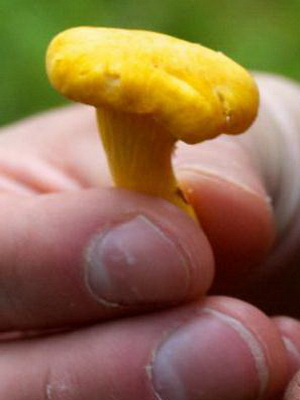
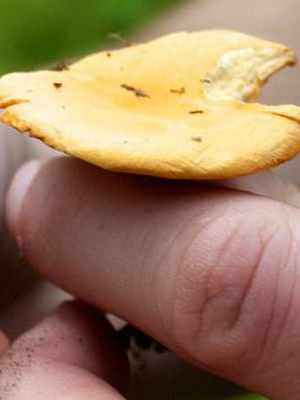
Chanterelle, real or common, belongs to the chanterelle family. It forms a symbiosis with pine, spruce, oak, beech or birch. Most of all, chanterelles prefer territories with a temperate climate. They definitely like to settle in mixed and coniferous forests. They grow in wet moss, grass or litter. The chanterelle collection season begins in early August and lasts until October.
False chanterelles always grow on old fallen trees or rotten stumps.In contrast to the real species, which grow in large colonies, occupying whole glades, inedible representatives grow in single specimens. Therefore, if you meet one fox in the forest, it is better to bypass it.
The following photo shows how to distinguish a false fox from an edible one:
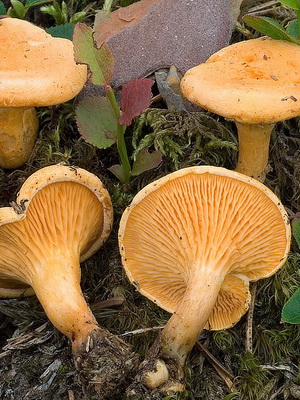
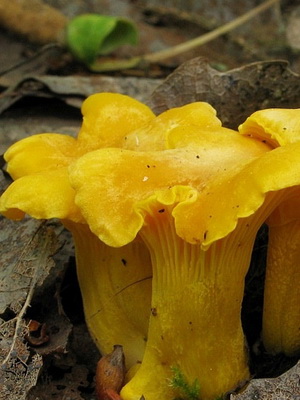
The first hat has an orange or golden yellow color with a funnel shape. The real fox is red in color with characteristic wavy irregular edges. The surface is smooth, matte, the skin is very difficult to separate from the pulp.
Beginner mushroom pickers often confuse false chanterelles with real ones, because both "relatives" of the mushroom kingdom grow in coniferous forests in the middle of moss or on deadwood.
How to distinguish edible and inedible chanterelles by legs?
How can one distinguish between edible and inedible chanterelles by legs? Mushroom pickers with experience in collecting chanterelles always pay attention to this part of the fruiting body. If the mushroom leg is strong and thick, then you have a real copy of the chanterelle in your hands. In addition, in edible species, the leg smoothly passes into a hat and has uniformity of color throughout the fungus. The shape of the legs has a conical shape, which tapers down a little.
The false chanterelle has a thin leg with a bright orange color, which is much darker below. In adult specimens, the inside of the leg is hollow and sharply separated from the cap.
It is also worth paying attention to the fact that the center of the cap is slightly raised in edible and inedible chanterelles at the initial stages of growth. With further maturation, it bends and becomes like a funnel. However, on this basis, it is better not to determine the edibility of mushrooms.
How else can you distinguish chanterelles from grebes and other poisonous mushrooms?
Is it possible to distinguish the fox from the edible mushroom by the flesh, and how to do it? Note that the flesh of the false chanterelle has a loose porous and completely tasteless structure. It has an unpleasant pungent odor, and if you press down the pulp with your fingers, the color does not change.
A real chanterelle with a cut has a white center and yellow edges. It has a pleasant fruity smell and sour taste. When pressed on the pulp immediately traces of a reddish hue remain.
How can you distinguish chanterelles from grebes or false mushrooms on the plates? These species of chanterelles have dense and thick plates, smoothly passing to the leg. Plates of false species are thin and frequent, bright orange in color. They never go over to the leg, but only reach it a little. The hat and leg of inedible chanterelles have a clear outline, which cannot be said about the real species, in which the hat and leg practically merge.
But still, the main difference between a real fox and an inedible species is the defeat of the fruiting body by parasites. If the flesh is eaten away by worms and there are prominent paths on the mushroom, then you have a false fox in front of you. It turns out that parasites do not like real foxes because they contain a substance called chitinmannosa. It secretes toxins that are harmless to humans, but harmful to insect larvae.
Note that it is not necessary to remember all the differences between false chanterelles and edible chanterelles, 2-3 basic characters are enough.
We suggest watching a video showing how to distinguish false foxes from real ones, which will explain everything in detail:
